Off the beaten track in western Crete
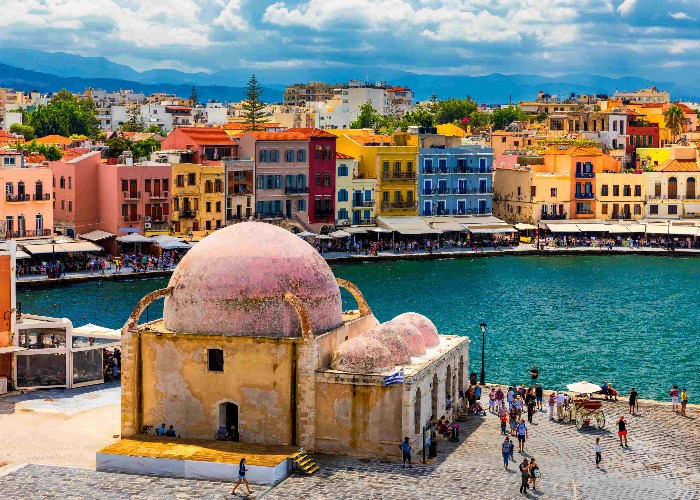
From mountain hikes to crumbling temples, Natalie Davies discovers the many delights of western Crete as she joins a new tour from Intrepid Travel that explores parts of the island rarely reached by the average tourist.
With ancient heritage stretching back to the Stone Age and a location in the middle of the Mediterranean – almost equidistant between Africa, Asia and the European mainland – Crete has long been a draw for history lovers, as well as fans of its famous dazzling beaches.
But this island has many more treasures besides – from stunning mountain ranges offering superb hiking for all abilities and charming boutiques displaying an array of handcrafted goods, to a food culture that celebrates the island’s world-class olive oil, wine, cheeses, nuts and organic honey.
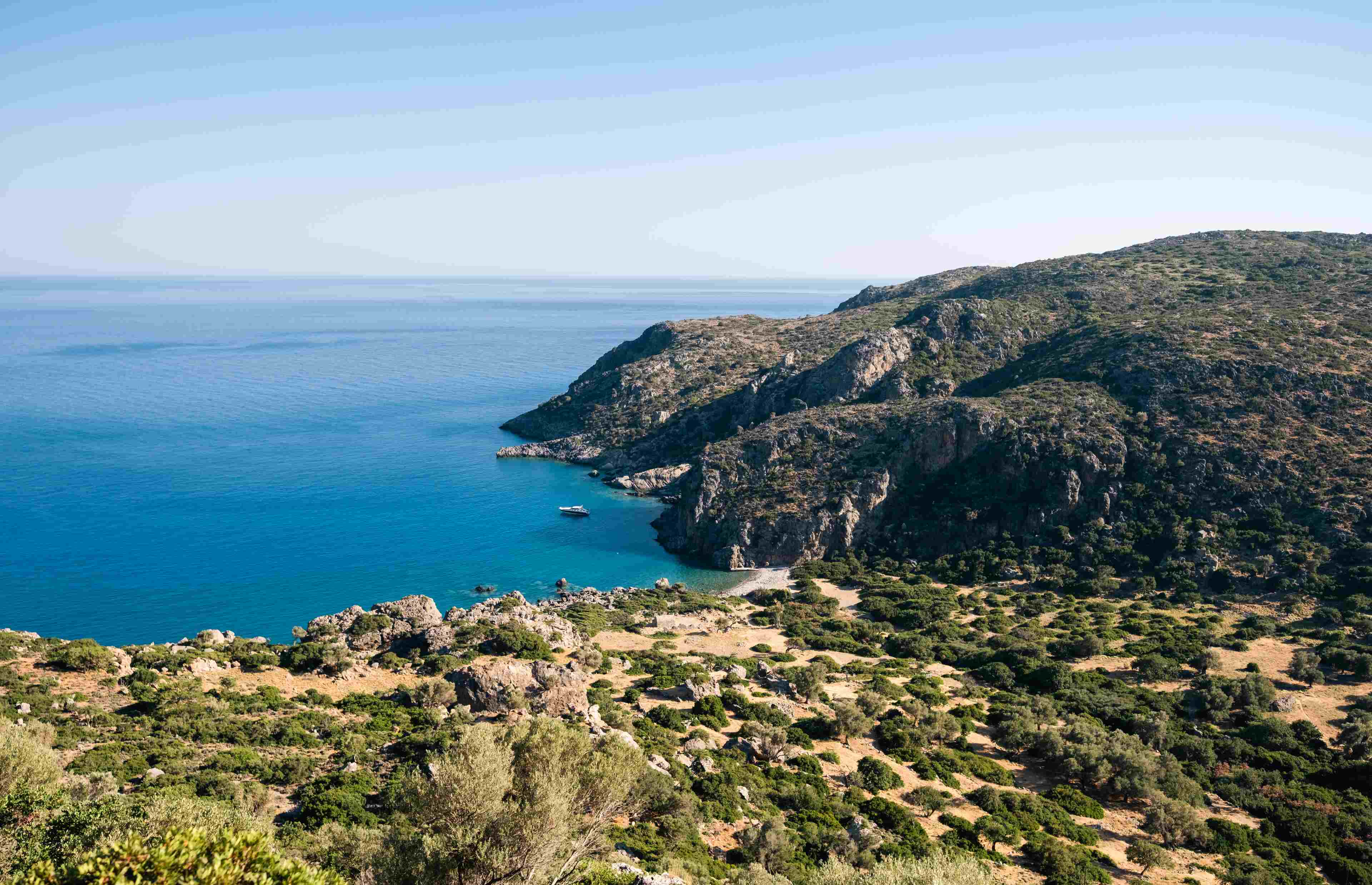 Kim Leuenberger
Kim Leuenberger
Many of these riches lie in networks of small mountain villages dotted along more than 50 named mountain peaks, interspersed with spectacular gorges and caverns, and it can be hard for independent travellers to make their own way here.
The roads here are hair-raising, taxis expensive and public transport limited, but joining this tour tour means a comfortable, air-conditioned shuttle between stops, while our brilliant guide Vassia points out landmarks and offers insight into everything we spot along the way.
Ancient meets modern
We begin our tour in the northern port city of Chania, settled by the Mycenaeans, Romans, Moors, Venetians and even the Egyptians, who gave the marina the spindle lighthouse that stands like a minaret at the end of the harbour arm.
 Georgios Tsichlis/Shutterstock
Georgios Tsichlis/Shutterstock
Now a trendy spot that’s home to 80,000 residents, Chania has restaurants, bars, galleries and cafés to rival any modern city, and yet walking around the old town, the past seems very close. From the wooden balconies and latticed shutters of old Moorish buildings to 19th-century townhouses with neo-classical plinths and columns, the city’s story is beautifully rendered in its architecture.
Our walking tour winds through spiralling streets past Chania Cathedral – where live folk bands sometimes play in the square outside – and the Archaeological Museum, housed in a former Franciscan monastery. It finishes at the Venetian stone wall that bookends the old town fortifications, the dried-up moat now a nightclub and car park.
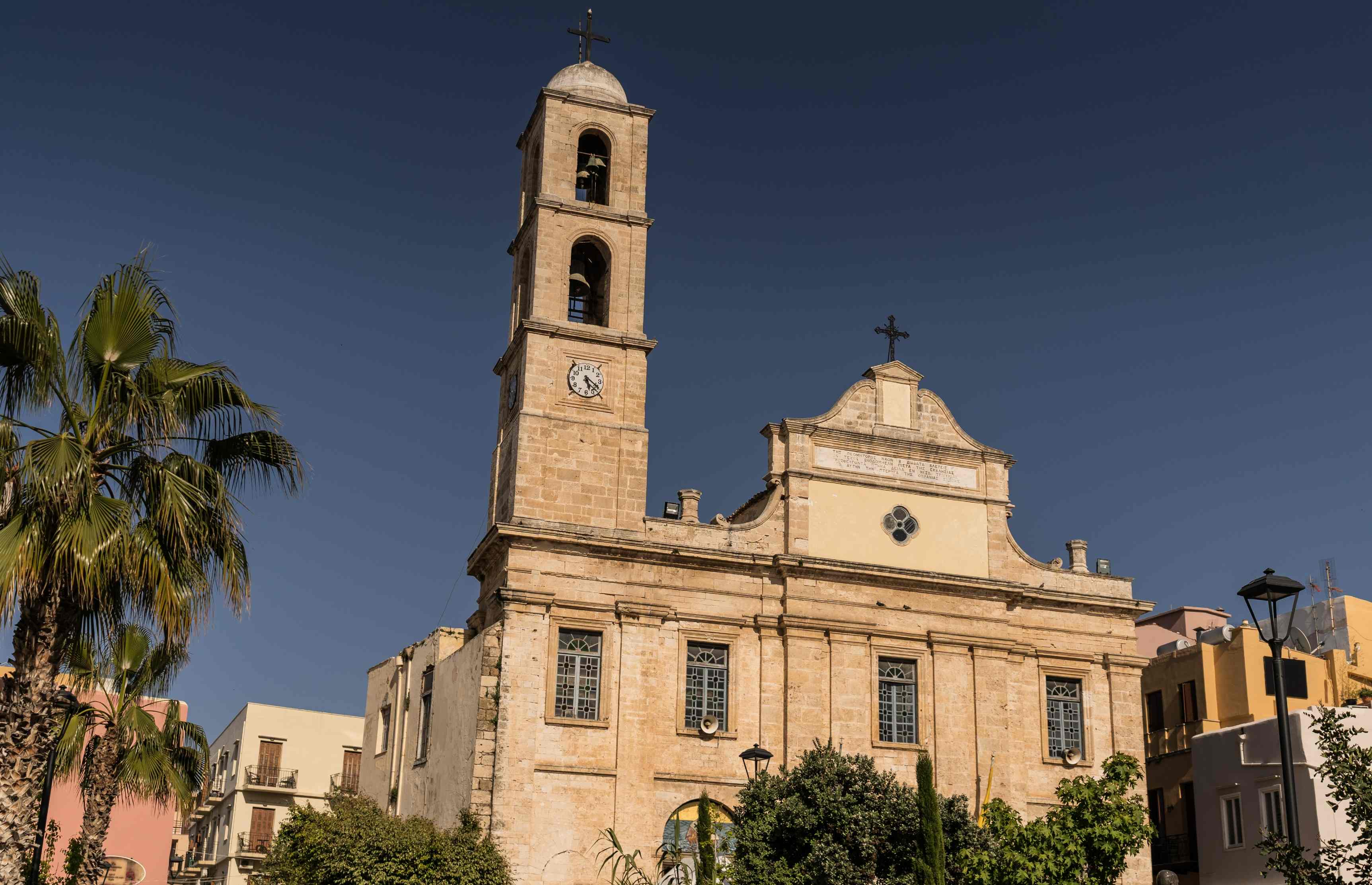 22Images Studio/Shutterstock
22Images Studio/Shutterstock
The shopping in Chania is exceptional, with modern designers reviving traditional Cretan crafts like jewellery-making, ceramics and knifemaking. Crete also has a long history of leatherwork, now sold in shops congregated along Skridlof Street – nicknamed Stivanadika after the long shiny boots (stivania) that form part of traditional Cretan dress.
READ MORE: 18 of the world's most outrageous shopping destinations
Dinner should be taken at the harbour, where fresh seafood and locally grown produce make it hard to have a bad meal. We try crispy anchovies, lightly charred aubergine salad and a soft leg of lamb, served with Vidiano white wine. It seems almost compulsory to round things off with grappa-like raki, alongside a sweet, baklava-esque dessert.
Wining and dining
The city backs onto the Lefka Ori (White Mountains), a range of more than 30 peaks and 50 gorges that makes up the Lefka Ori National Park between Chania in the north and Sougia in the south. The highest peak reaches 2,450 feet (747m), and even in April some are snow-capped. The sheer rocky terrain is perfectly suited to the hardy goats and sheep that produce the rich yogurt, butter and cheese found within so many of Crete's traditional dishes.
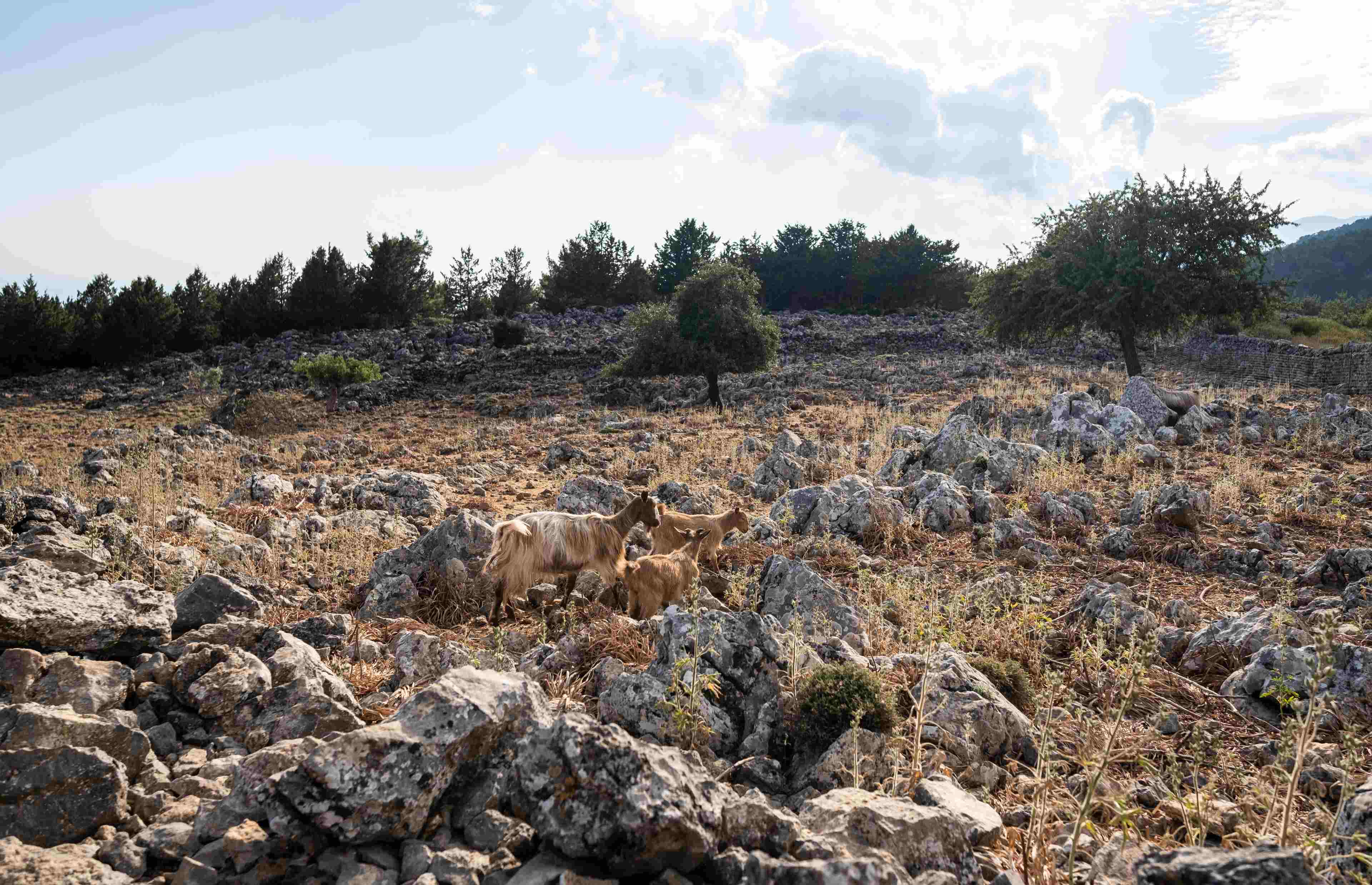 Kim Leuenberger
Kim Leuenberger
We head through the ravines to the village of Alikampos and visit the organic, solar-powered, family-run Dourakis Winery for a tasting and tour. The owner, Antonis, takes us into the cool, barrel-lined cellars to tell us about Cretan wine culture, a millennia-old industry that’s still a big part of daily life.
READ MORE: Europe's best food tours
Even today many families produce small batches of their own ‘house wine’, which is brown and robust and served in terracotta jugs at small tavernas. Over lunch we taste a lovely red made from the native Romeiko grape and a buttery, oaked Vidiano, served with bread, olives, fried goat’s cheese pastries, a puréed fava bean dip and a Cretan Greek salad with mizithra cheese.
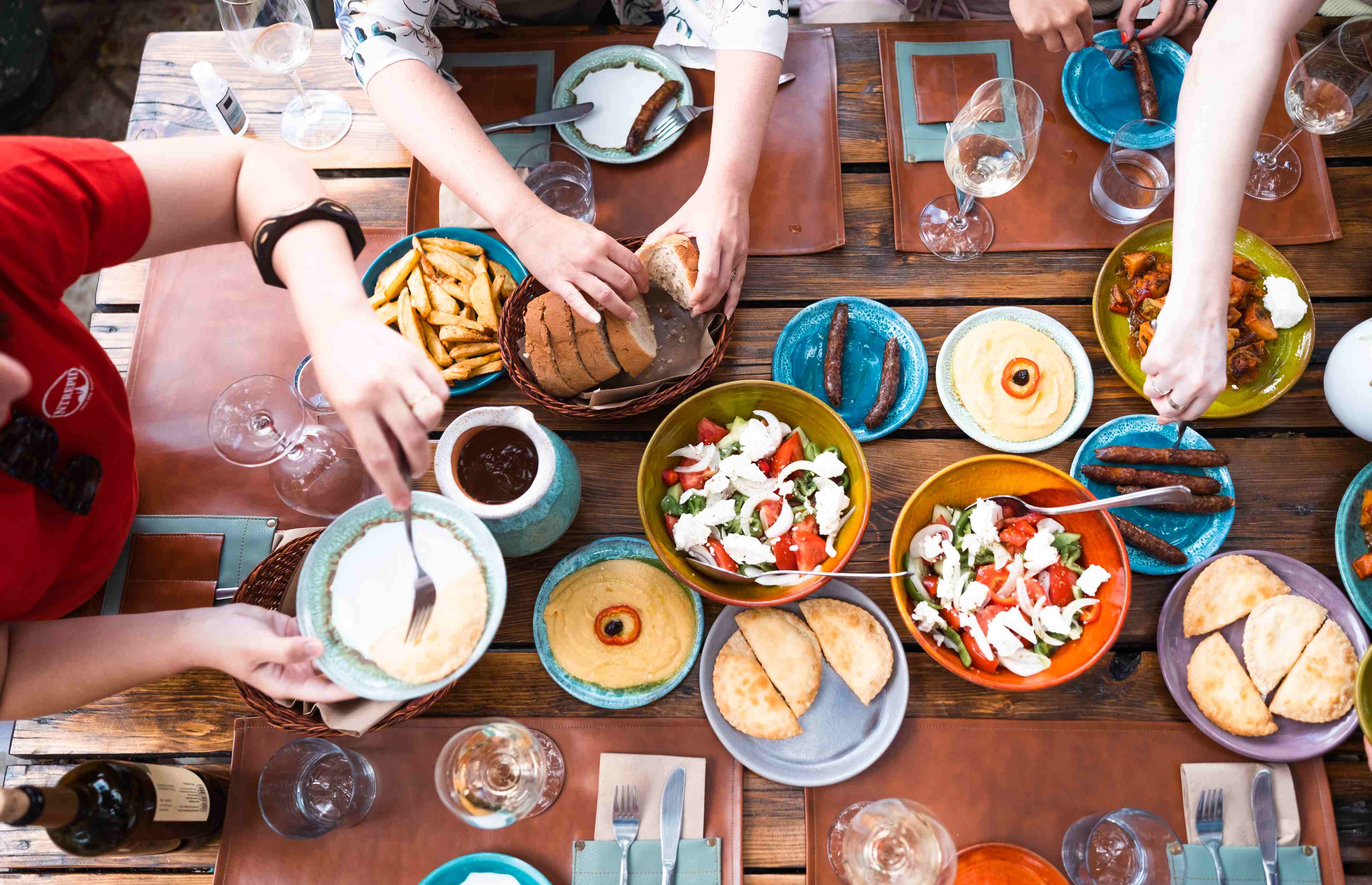 Kim Leuenberger
Kim Leuenberger
Mellow mountains
As we drive into the mountains, we witness a brave soul bungee-jumping from a bridge over Aradena Gorge and explore an abandoned village atop a vertiginous cliff. Once a bustling settlement with 700 inhabitants, war, poverty and a blood feud spanning three generations caused all remaining residents to leave the village in the 1950s, never to return.
 Patryk Kosmider/Shutterstock
Patryk Kosmider/Shutterstock
We stay the night at the family-run Alonia Guesthouse in the village of Agios Ioannis, recognised by the Mediterranean Experience of Eco Tourism (MEET) for its excellent environmental credentials. This solar-powered guesthouse serves local produce and adheres to strict guidelines on water and power consumption. Guests sleep in cute wooden cabins with their own vine-shaded terraces – basic but oh-so-romantic.
Though there are popular hiking spots nearby, the village remains blissfully quiet and unspoilt. One of the guesthouse owners takes us on a woodland hike, pointing out the native plants and herbs they use to make mountain tea at breakfast. We walk through the charred black pillars of a recent forest fire, speckled with white under a cornflower sky. It’s eerie, silent and beautiful.
 Kim Leuenberger
Kim Leuenberger
A simple stone hut serves as a communal kitchen and dining room, with plenty of outdoor seating for alfresco eating and socialising. Our hosts are big on cultural preservation and arrange for a local folk band to perform during our evening meal, playing centuries-old Cretan songs while moonlight splashes across the pure-white mountains.
Sun, sand and seafood
The next morning, we board a private boat at Chora Sfakion and set off for the village of Sougia along Crete’s stunning south coast. First stop is a tiny, heavenly beach called Marmara.
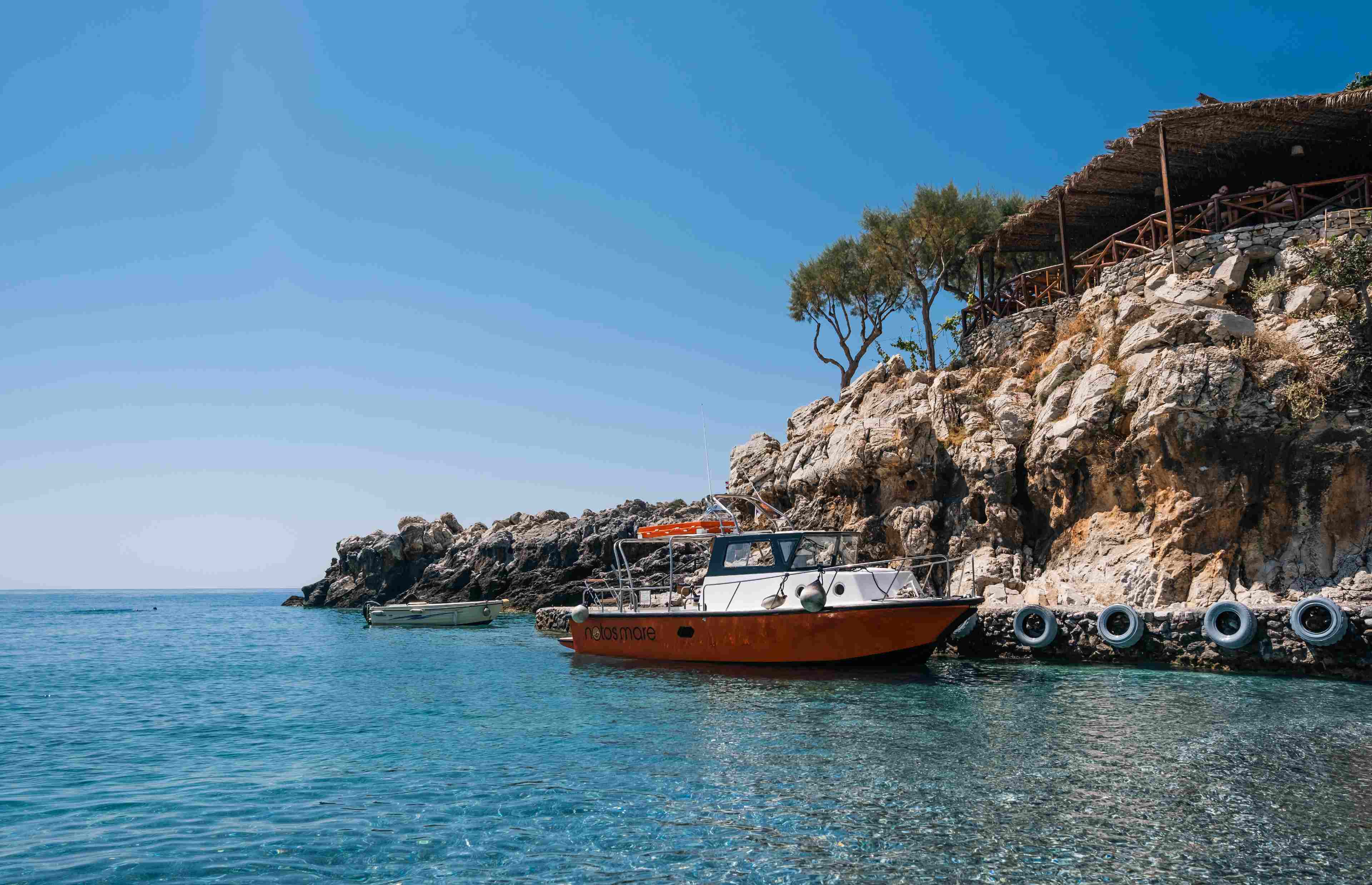 Kim Leuenberger
Kim Leuenberger
Small caves and smooth rocks perfect for sunbathing enclose the bay, while a tiny café just up the cliff offers incredible views. Motoring in and out of the little coves we pass the Byzantine St Paul’s Church, before dropping anchor and diving off the boat into the turquoise sea.
Sougia is a small resort that fills up in August. Trek through Lissos Gorge and see ancient frescoes and mosaics at Kirikos Church and the Temple of Asklepios, or opt for a sun lounger and beachside iced coffee and let your cares melt away into the afternoon sun.
 Kim Leuenberger
Kim Leuenberger
Browse jewellery, textiles and ceramics made by local craftspeople and grab a moonlit dinner in the gorgeous walled courtyard of Rebetka Taverna, feasting on fresh fish, gemusta (rice-stuffed vegetables), beetroot salad and mouth-watering moussaka.
Cuisine, culture and crafts
In the lush, green courtyard of their Chania home, friends Anna and Eleni show us how to make kalitsouni, the delicious cheese pastries we’ve enjoyed throughout the trip. We mix the much-loved Mizithra cheese with another softer, ricotta-like cheese that’s only available during lambing season, and combine this with local horta, a green leaf similar to spinach, along with parsley, fennel and mint.
READ MORE: 9 tips for eating well on holiday
Everyone we meet in this region has their own dairy dealer, often a relative that has their own animals and delivers yogurt and cheese fresh from the farm. Anna’s mother brings us handmade sweets made of crushed walnuts, rose water and sugar, along with a jug of house wine made by her father.
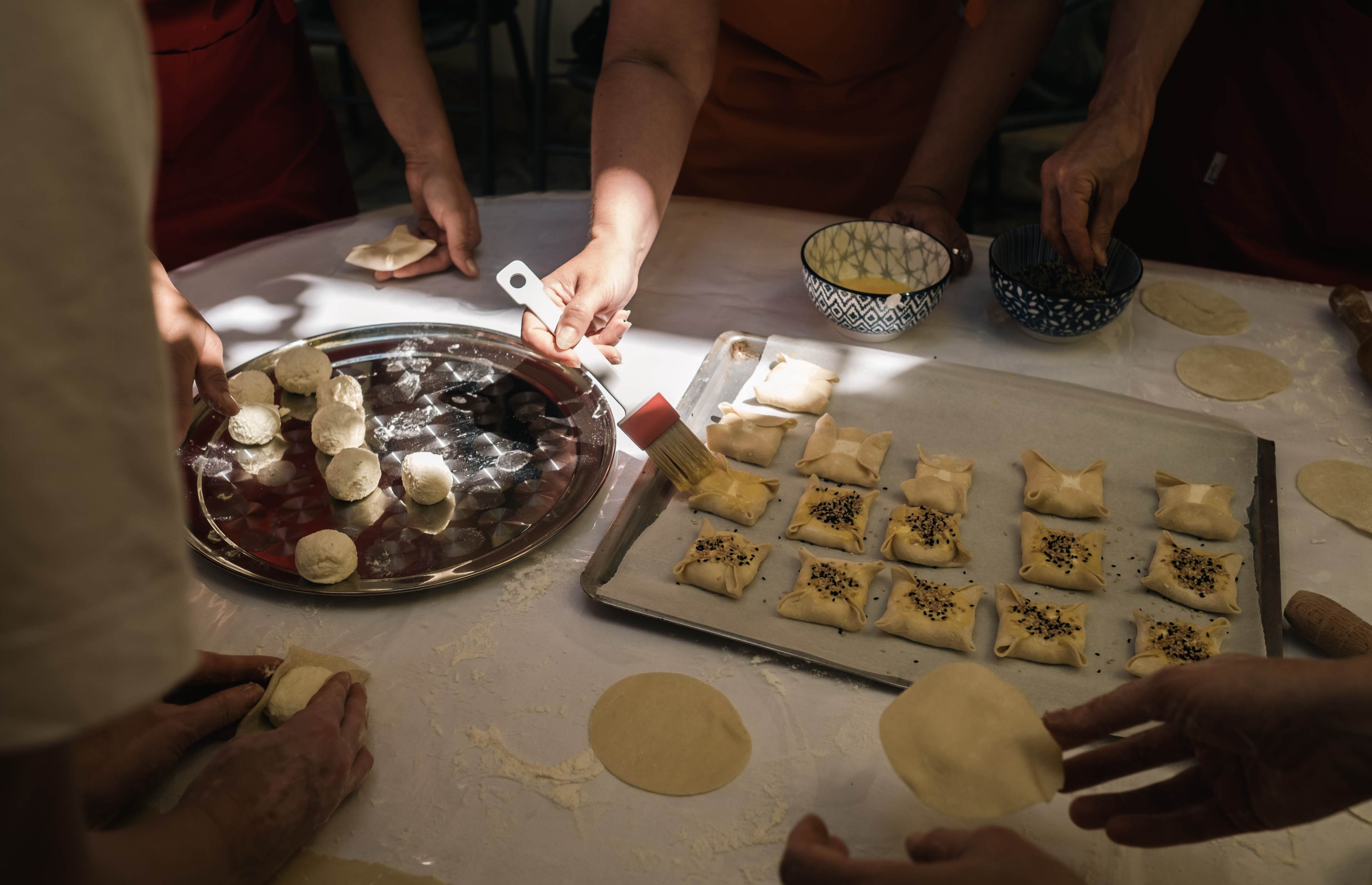 Kim Leuenberger
Kim Leuenberger
We spend the afternoon meeting local artisans. At Flakatoras Ceramics brothers George, Felix and Michael make vessels and figurines, while their mother hand-paints the glaze and their sister crafts jewellery out of clay beads. At the SAITA textile shop, warm and bubbly owner Effi shows us her grandmother’s loom, which she still uses to weave traditional woollen rugs and throws, and shows off her hardworking team of silkworms.
Next up is a knife shop, where a young couple craft fine, bone-handled daggers worn by men and women as part of traditional dress, engraved with Greek poems promising fealty and love.
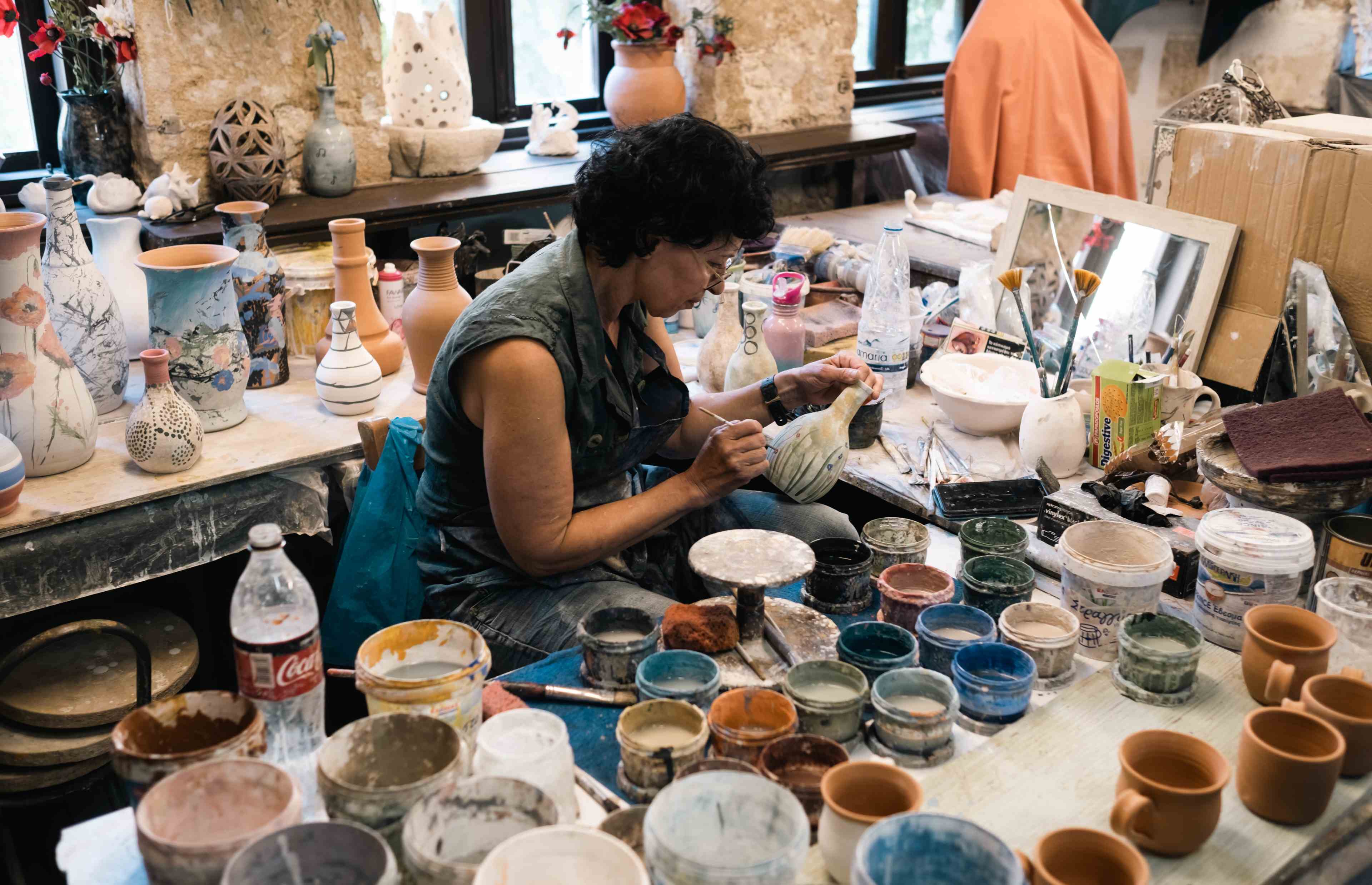 Kim Leuenberger
Kim Leuenberger
You can get a real sense of skills honed and passed down through generations, with the same bowls, blankets and blades taking their places in otherwise modern homes. The people are warm and welcoming, offering us raki, sweets and fruit from their own trees.
For our last dinner, we head back to the harbour and snag an in-demand table at Salis, a popular restaurant with a 1,000-strong wine list that specialises in farm-to-table organic produce.
In the evening sun, we dig into inventive small plates of calamari carpaccio, tuna belly with cured watermelon rind and teriyaki sauce, compressed cucumbers fermented with roasted almonds and duck with beetroot pilaf and 2016-vintage marmalade.
 Georgios Tsichlis/Shutterstock
Georgios Tsichlis/Shutterstock
The meal is a fitting end to the trip: food we might never have tasted, villages we might never have seen and new friends we might never have met, gathered around a table while the sunset turns the sky peach, pink and gold.
Natalie Davies was a guest of Intrepid Travel, which offers 7 days from £1,140pp on its Highlights of Crete trip including ground transport, B&B accommodation, the services of a local guide and various activities.
READ MORE: Secret Greece: 7 islands you've probably never heard of
Lead image: DaLiu/Shutterstock
Comments
Be the first to comment
Do you want to comment on this article? You need to be signed in for this feature